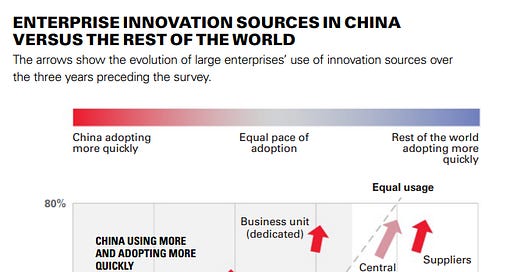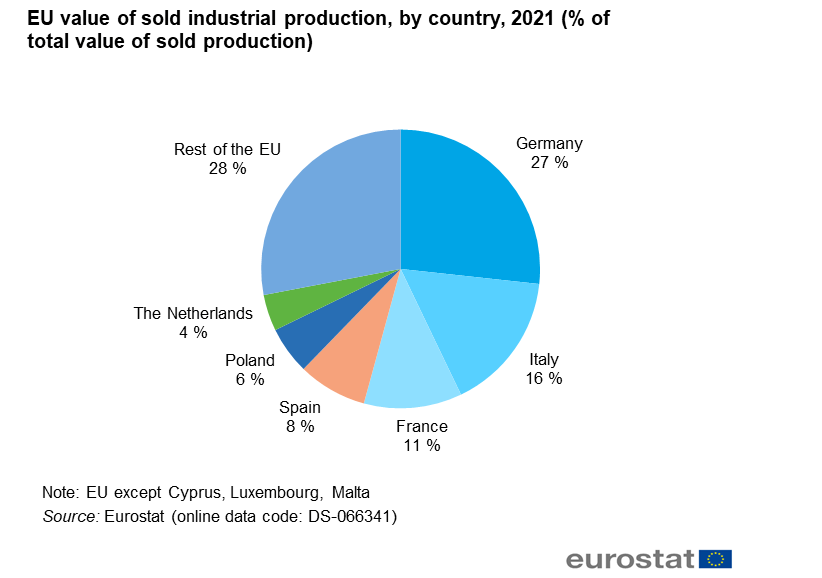A recent analysis published in the MIT SLOAN Management Review discussed some of the key differences between the Chinese model of innovation and the rest of the world. What they found was that the Chinese are far more:
Customer driven
Competitor driven
Employee driven
While also being more likely to have fully dedicated units to innovation.
from Why Innovators in China Stay Close to the Market in MIT Sloan Management Review Fall 2022.
The Chinese are able to leverage the high rate of adoptions of new technologies by their consumers into data to be used to drive innovation forward - as opposed to EU/USA companies leveraging data to advertise more. Further to this, it has become extremely common in China to use the feedback from employees who have direct contact with customers (sales, repairs…etc), to improve existing products and services. This increase in innovation has been met with great skepticism, claiming that the Chinese are only good at copying. Yet, in many cases its foreign brands who decide to partner up with local Chinese brands to take advantage of their own innovation model. The review points to a deal done by Daimler to revitalize its Smart brand by partnering up with Geely to build a fully electric car.
Now businesses worldwide will have to develop two models of innovation ‘one for China, and one for the rest of the world’. But what if China’s model of innovation is in fact more optimal. Shouldn’t other states attempt to adopt some of the key features? Shouldn’t customers in the EU/USA be allowed to have a say in the evolution of products and services?
The Opportunity:
With Italy deflating over the last three decades to the point of having become a weak peripheral state - unable to defend itself within the IMF against a speculative driven attack against itself: PIIGS - the opportunity is there to try something new.
from Philipp Heimberger
The Italian economy is still the 2nd most important one within the EU - a reminder that the EU abides to a mercantilist model led by the Germans. What matters isn’t just what you produce, it’s also what you sell - the Italians must leverage what little dignity they have left to do what they’ve always done, ‘cosa nostra’. Why abide by a standardized approach to innovation that favors large multinational corporations when you’re the only G20 economy based on small to medium sized enterprises. How arrogant or stupid do you have to be to believe micro family firms can out innovate their larger counterpart by using the same strategies?
With still almost 30% of the population living in rural areas, roughly 26 million people living in cities of 20,000 or more and only 2 cities with more than 1 million inhabitants, Italy is the perfect lab to experiment with customer, competitor, employee driven innovation.
As the cost of broadband continues to drop, and the Italian government has repeatedly stated the importance of digitalization, there should be very few hurdles in creating the kind of platform that would allow Italian consumers to directly interact with producers. Italian businesses should encourage their employees to give feedback on whatever product/service they’re selling as their experience is in fact far more valuable that a google analytics dossier from the USA - because it will be tailored to the local consumer.
Just Do It:
Branding matters and so does advertising. As Italians are known all over the world for their sense of style - furniture, cars, fashion…etc - it’s possible that by tailoring products to the Italian consumer, foreign consumers will buy more Made in Italy. And in a world where trade balance matters, and the current Italian government led by Supreme Leader Mario Draghi has managed to destroy the Cura Monti, Italy needs everything it can to restore its current account.
Buy MED…







